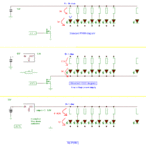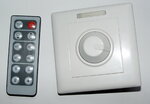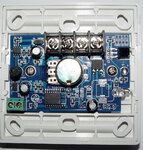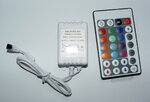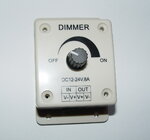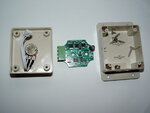aq_mishu
Full Member level 4
guys,
I named this topic PWM because I'm focused on it... but above all, I need a solution. The thing is my authority made the cabling system for AC220, but bought DC3V 350mA LED for their pool lamp. Now I tried with individual rectifier method for each... but the most big prob is space issue while installing. Thus I came with the solution as follows:
Sending Pulsating DC at 5V @ 100Hz. (the cable is within 100ft, with parallel loads of LEDs). This case, I need to give series resistors and the values are real tricky and not available... so suggest me in this case... I mean pulsating DC at 5V/12V with proper freq and resistor value, which is standard value ofcourse.
The second method I was thinking was same, pulsating DC, but with PWM (Phase correct) with for 12V, pwm value of 10 (i tried with duty cycle 25% but just burned down a light) or 5V with PWM of 20.
Well, it's best if I can avoid the series resistor and can push the current to lit the LEDs up (amber, high intensity) at 100FT.
Also for PWM, I found LEDs getting hot. should I change the prescale to reduce the frequency??
I'm using ATMega8 with 12MHz. And also IRFZ44N for driving.
Guys, I need help...
Mishu~
I named this topic PWM because I'm focused on it... but above all, I need a solution. The thing is my authority made the cabling system for AC220, but bought DC3V 350mA LED for their pool lamp. Now I tried with individual rectifier method for each... but the most big prob is space issue while installing. Thus I came with the solution as follows:
Sending Pulsating DC at 5V @ 100Hz. (the cable is within 100ft, with parallel loads of LEDs). This case, I need to give series resistors and the values are real tricky and not available... so suggest me in this case... I mean pulsating DC at 5V/12V with proper freq and resistor value, which is standard value ofcourse.
The second method I was thinking was same, pulsating DC, but with PWM (Phase correct) with for 12V, pwm value of 10 (i tried with duty cycle 25% but just burned down a light) or 5V with PWM of 20.
Well, it's best if I can avoid the series resistor and can push the current to lit the LEDs up (amber, high intensity) at 100FT.
Also for PWM, I found LEDs getting hot. should I change the prescale to reduce the frequency??
I'm using ATMega8 with 12MHz. And also IRFZ44N for driving.
Guys, I need help...
Mishu~

